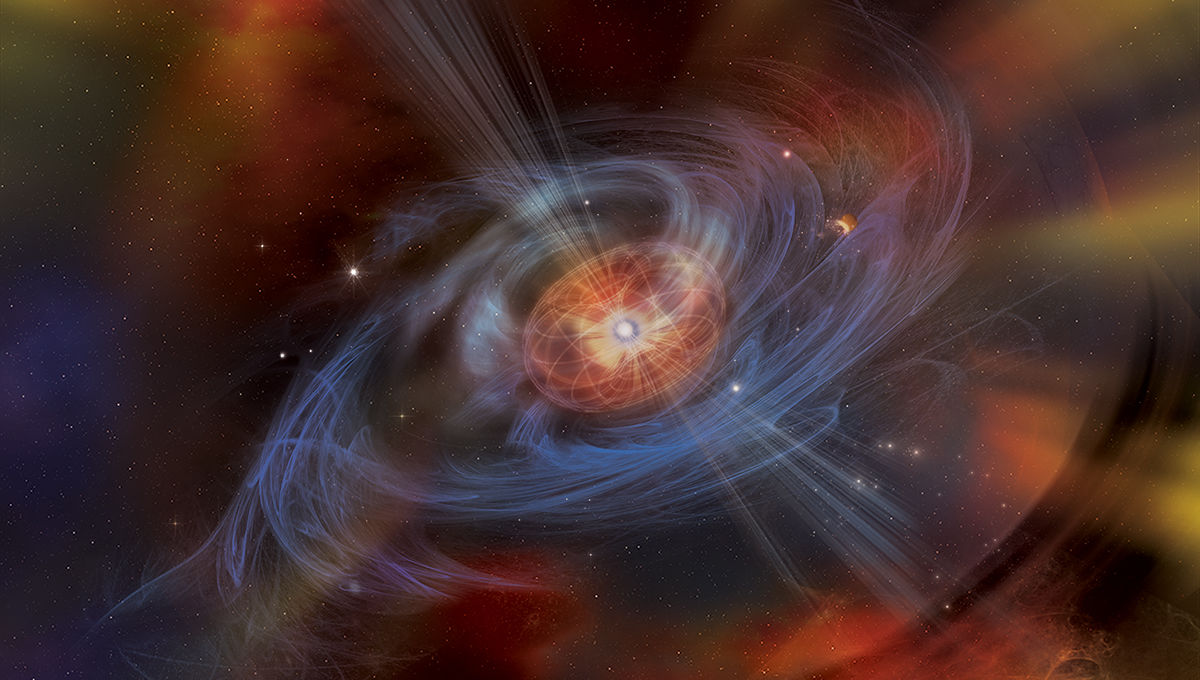
A breakthrough occurred in 2016 when a Fast Radio Burst (or FRB) that went off first in 2012 was seen to repeat several times, implying that the cause wasn't totally destructive explosions.
Artwork depicting a magnetar superflare, an eruption of epic energy from the surface of a neutron star.So a team of scientists used the huge Five hundred-meter Aperture Spherical radio Telescope in China to watch FRB 121102 — the one in 2012 that was the first seen to repeat — over a time range of 47 days between August 29 and October 29, 2019.They had a total observing time of 59.5 hours, and during that time they saw FRB 121102 burst a staggering 1,652 times.
The myriad of bursts seen in the FAST observations were spread out in terms of energy emitted (think of it like brightness).Knowing the distance to the burster and the energy received at the telescope — and assuming the event sent out energy in all directions, what's called isotropic emission — they saw events ranging in brightness from 1,000 to more than two million times the Sun's energy.
Artwork of radio waves from FRB 121102 detected by the huge Five hundred-meter Aperture Spherical radio Telescope (FAST) in 2019?Artwork depicting the Fast Radio Burst FRB 121102 over the Very Large Array, which first pinpointed it position in the sky in 2016.The problem there is how many bursts were seen by FAST in so short a time.When they plotted the number of bursts versus the energy of each burst, they saw two peaks: One at about 4x1037 and another at about 4 x 1038 ergs (roughly 10,000 and 100,000 times the energy emitted by the Sun per second, but remember the FRB emits this much energy in a single millisecond).They also looked at the "waiting time," the time it took after one burst for another to be seen.But this may be biased by the fact that they don't observe for more than an hour or so at a time, and in fact is consistent with random wait times between bursts.